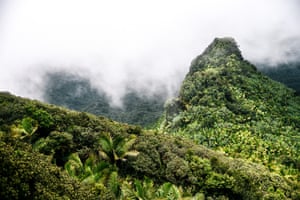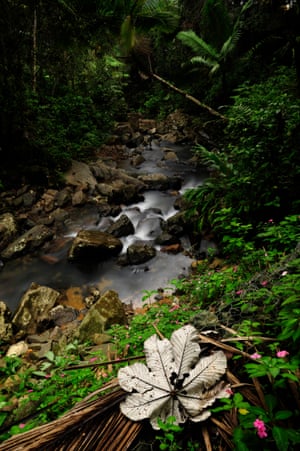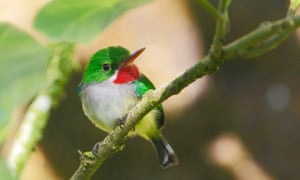Wednesday January 15th… Dear Diary. The main purpose of this ongoing post will be to track United States extreme or record temperatures related to climate change. Any reports I see of ETs will be listed below the main topic of the day. I’ll refer to extreme or record temperatures as ETs (not extraterrestrials)😊.
Disappearing Insects- A Critical Problem
Most everyone knows that insects, despite being stingy pests at times, are vital to the environment and the food chain. For years we have been seeing reports of honey bees disappearing, which can partially be blamed on insecticides and other environmental poisons. Recently due to California’s drought and fire problems the population of Monarch Butterflies has been plummeting. Now I am seeing very alarming articles on wholescale disappearance of insect species leading to a wipeout of bird and animal populations. Today I will repost and quote most of this Guardian article letting my readers know of the extent of this crisis stemming from climate change:
Insect collapse: ‘We are destroying our life support systems’

El Yunque national forest in Sierra de Luquillo, Puerto Rico. Photograph: Stuart Westmorland/Corbis/Getty Images
Scientist Brad Lister returned to Puerto Rican rainforest after 35 years to find 98% of ground insects had vanished.
“We knew that something was amiss in the first couple days,” said Brad Lister. “We were driving into the forest and at the same time both Andres and I said: ‘Where are all the birds?’ There was nothing.”
His return to the Luquillo rainforest in Puerto Rico after 35 years was to reveal an appalling discovery. The insect population that once provided plentiful food for birds throughout the mountainous national park had collapsed. On the ground, 98% had gone. Up in the leafy canopy, 80% had vanished. The most likely culprit by far is global warming.
“It was just astonishing,” Lister said. “Before, both the sticky ground plates and canopy plates would be covered with insects. You’d be there for hours picking them off the plates at night. But now the plates would come down after 12 hours in the tropical forest with a couple of lonely insects trapped or none at all.”
“It was a true collapse of the insect populations in that rainforest,” he said. “We began to realize this is terrible – a very, very disturbing result.”

Earth’s bugs outweigh humans 17 times over and are such a fundamental foundation of the food chain that scientists say a crash in insect numbers risks “ecological Armageddon”. When Lister’s study was published in October, one expert called the findings “hyper-alarming”.
The Puerto Rico work is one of just a handful of studies assessing this vital issue, but those that do exist are deeply worrying. Flying insect numbers in Germany’s natural reserves have plunged 75% in just 25 years. The virtual disappearance of birds in an Australian eucalyptus forest was blamed on a lack of insects caused by drought and heat. Lister and his colleague Andrés García also found that insect numbers in a dry forest in Mexico had fallen 80% since the 1980s.
“We are essentially destroying the very life support systems that allow us to sustain our existence on the planet, along with all the other life on the planet,” Lister said. “It is just horrifying to watch us decimate the natural world like this.”
It was not insects that drew Lister to the Luquillo rainforest for the first time in the mid-1970s. “I was interested in competition among the anoles lizards,” he said. “They’re the most diverse group of vertebrates in the world and even by that time had become a paradigm for ecology and evolutionary studies.”

The forest immediately captivated Lister, a lecturer at Rensselaer Polytechnic University in the US. “It was and still is the most beautiful forest I have ever been in. It’s almost enchanted. There’s the lush verdant forest and cascading waterfalls, and along the roadsides there are carpets of multicoloured flowers. It’s a phantasmagoric landscape.”
It was important to measure insect numbers, as these are the lizards’ main food, but at the time he thought nothing more of it. Returning to the national park decades later, however, the difference was startling.
“One of the things I noticed in the forest was a lack of butterflies,” he said. “They used to be all along the roadside, especially after the rain stopped, hundreds upon hundreds of them. But we couldn’t see one butterfly.”
Since Lister’s first visits to Luquillo, other scientists had predicted that tropical insects, having evolved in a very stable climate, would be much more sensitive to climate warming. “If you go a little bit past the thermal optimum for tropical insects, their fitness just plummets,” he said.
As the data came in, the predictions were confirmed in startling fashion. “The number of hot spells, temperatures above 29C, have increased tremendously,” he said. “It went from zero in the 1970s up to something like 44% of the days.” Factors important elsewhere in the world, such as destruction of habitat and pesticide use, could not explain the plummeting insect populations in Luquillo, which has long been a protected area.
Data on other animals that feed on bugs backed up the findings. “The frogs and birds had also declined simultaneously by about 50% to 65%,” Lister said. The population of one dazzling green bird that eats almost nothing but insects, the Puerto Rican tody, dropped by 90%.

Lister calls these impacts a “bottom-up trophic cascade”, in which the knock-on effects of the insect collapse surge up through the food chain.
“I don’t think most people have a systems view of the natural world,” he said. “But it’s all connected and when the invertebrates are declining the entire food web is going to suffer and degrade. It is a system-wide effect.”
To understand the global scale of an insect collapse that has so far only been glimpsed, Lister says, there is an urgent need for much more research in many more habitats. “More data, that is my mantra,” he said.
The problem is that there were very few studies of insect numbers in past decades to serve as a baseline, but Lister is undeterred: “There’s no time like the present to start asking what’s going on.”
I have to wonder if just minute increases in temperature due to global warming is the main culprit for Puerto Rico’s insect problem. Certainly global warming is affecting insect and animal species from Germany to the South American Andes. One big point: Should insects around the globe disappear the entire food supply up the chain for humanity will be in jeopardy. So, heed warnings from our entomologist scientist friends. Pun intended, I’m bugging you to do so.
…………………………………………………………………………
Here is more climate and weather news from Wednesday:
(As usual, this will be a fluid post in which more information gets added during the day as it crosses my radar, crediting all who have put it on-line. Items will be archived on this site for posterity.)
What's my response when people say "we're f#cked" when it comes to climate change?
Well here it is, via @TVO @TheAgenda: https://t.co/WeaW5Elx1K— Michael E. Mann (@MichaelEMann) January 16, 2019
Thanks for the shoutout @PopMech!
They highlight @Amanda_Walker's @PSUresearch new Hurricane Storm Surge scale with @MichaelEMann @SonyaKMiller and Ray Najjar as "offer[ing] more accountability and openness in how they measure damage". https://t.co/rlzPfQvjKr
— David Titley (@dwtitley) January 16, 2019
One-foot-plus #snow events (over 2 days or less) are rare in the Ohio Valley outside the lake snowbelts, last occurring almost 9 years ago in #Pittsburgh and almost 11 years ago in Columbus, OH. One of 9 things you need to know about #WinterStormHarper. https://t.co/EKGNGhjrUe pic.twitter.com/L1ICwq5Ojh
— Jonathan Erdman (@wxjerdman) January 16, 2019
#WinterStormHarper will affect the lower 48 with rain or snow through Sunday! Coast-to-coast, we're timing out the snow, wind, & FRIGID wind chills expected. #Blizzard conditions are likely for millions this weekend. Today, Harper is pounding California with FEET of #snow! #WUTV pic.twitter.com/NCZDnIe3WN
— Weather Underground (@wunderground) January 16, 2019
Working with nature is the best chance we have for the rapid turn around our world society requires now.
While it looks like we could have another world war or economic crash. I know we have the potential to avert both if leaders come together more & the people keep doing! https://t.co/9xXPG9lXB9
— Matthew Bonnstetter (@MLBinWA) January 16, 2019
As wind energy gets less expensive and fossil fuel plants become more financially risky, some Midwestern utilities are moving in a new direction. https://t.co/s3Z2JtwoWQ
— InsideClimate News (@insideclimate) January 16, 2019
The polar vortex split has opened the floodgates to Arctic air, far more active storm track in Midwest/Eastern US and Western Europe. Details: https://t.co/xiZ5APYpNd
— Andrew Freedman (@afreedma) January 16, 2019
(If you like these posts and my work please contribute via the PayPal widget, which has recently been added to this site. Thanks in advance for any support.)
The Climate Guy